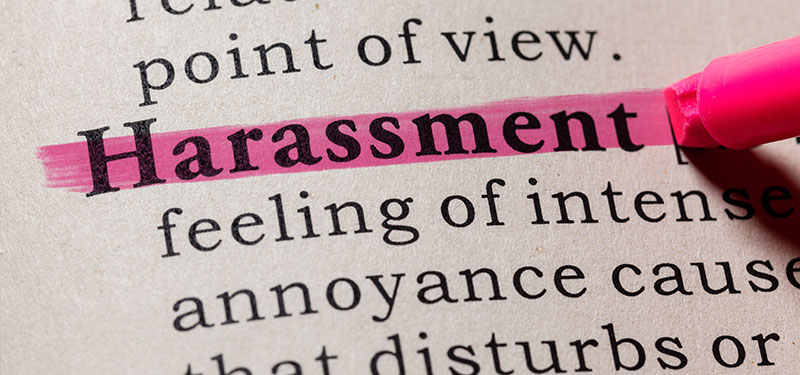We frequently receive questions about specific conduct and communications and whether they constitute harassment and how to address them. Our understanding and advice on what behavior rises to the level of harassment comes from applicable state and federal laws, the regulations and guidelines from the agencies charged with enforcing those laws, and the decisions from the courts interpreting those laws. The analysis is often highly fact-specific and has evolved with technology and social norms. In the past few months, both the U.S. Equal Employment Opportunity Commission (EEOC) and Massachusetts Commission Against Discrimination (MCAD) have proposed new and updated guidelines on harassment in the workplace. The guidelines themselves are not a substitute for the text of the applicable civil rights and fair employment statutes and are not binding authority; they are, however, particularly useful because they are instructive on how the agencies (and courts, too) will enforce and interpret those laws. The EEOC’s draft guidelines are presently under review and now closed for comment. The MCAD has prepared proposed guidelines on harassment in the workplace as well. The MCAD is currently soliciting public comment on its draft guidelines through March 25, 2024. Employers should take note of the proposed changes. Housing providers should take note, too, as many of the same principles and constructs for thinking about harassment and discrimination can be – and are – applied to housing and housing providers.
As we await final guidance from the EEOC and MCAD, which will likely be forthcoming later this year, employers should still take steps to prevent workplace harassment.
For this update, we are not covering all the areas that the proposed guidelines address; rather, we are highlighting two of the areas, online harassment and defining/proving harassment, which the draft guidelines touch upon for the first time or in new ways.
Online Harassment
Typically, employers are not liable for employee behavior outside of the workplace. The new EEOC and MCAD proposed guidance outline how employers may be liable for online conduct that affects the workplace and contributes to a hostile work environment. Actionable harassment occurs when there is unwelcome conduct based on membership in a protected class and that conduct, which is severe and pervasive, interferes with an employee’s ability to perform their work or it changes the terms and conditions of employment. According to the proposed guidance, digital conduct and content (whether inside or outside of the actual work environment) can create liability for a hostile work environment if that conduct and/or content impacts the workplace. For example, the EEOC highlighted that employers can be liable for harassment based on their employee’s personal activity outside the workplace, including on social media, if that conduct affects the terms and conditions of employment and/or workplace environment. Two examples the EEOC provides are:
• An Arab American employee is the subject of ethnic epithets that a coworker posts on a personal social media page, and either the employee learns about the post directly, or other coworkers see the comment and discuss it at work, then the social media posting can contribute to a racially hostile work environment.
• A Black woman alleged she was the subject of coworkers’ harassing conduct at work, culminating in an offensive race-based Instagram post. Based on these facts, an investigator found that the combined conduct, including the social media post, was sufficient to create a hostile work environment.
Finally, the guidance affirms that workplace conduct in a remote/virtual environment can also subject an employer to liability. As examples, the EEOC notes that offensive comments during a virtual meeting or inappropriate background imagery during a video conference can contribute to a hostile work environment in the same way as offensive language/conduct at in-person meetings and in face-to-face communications.
Harassment as Subjectively Unwelcome and Objectively Hostile
To demonstrate that conduct constitutes harassment, frequent questions that come up are: Conduct that is unwelcome to whom? Hostile by whose definition? Who or what is the measuring stick? Based on recent court decisions, to succeed on a hostile work environment claim, an individual must demonstrate that the offensive conduct was both subjectively and objectively hostile. The EEOC guidance explains that this means that the complaining party viewed the conduct unfavorably and unwelcome/hostile. The complained-of conduct must also be objectively hostile, which requires a determination of what the “reasonable person” would think. Notably here, the EEOC suggests that the reasonable person is one who shares the complainant’s protected class. Finally, the EEOC explains that although conduct must be evaluated in the context of the particular work environment in which it takes place, there are no “crude environment” or “prevailing workplace culture” exceptions if the harassment otherwise meets the standard of unwelcome conduct that is severe or pervasive. As an example, the EEOC states that public displays of sexually suggestive imagery that demean women can contribute to an objectively hostile work environment for female employees, even if it is a long-standing practice and the workplace is otherwise rife with indiscriminate vulgar conduct.
Awaiting Final Guidance
As we await final guidance from the EEOC and MCAD, which will likely be forthcoming later this year, employers should still take steps to prevent workplace harassment by:
• Staying up to date on workplace harassment laws and guidance.
• Creating and enforcing a written policy prohibiting harassment and implementing a process for reporting, investigating, and acting on harassment complaints.
• Participating in anti-harassment training.
If you have questions about the proposed guidelines, and when and how to update your employment policies and practices, you can contact MBM.


